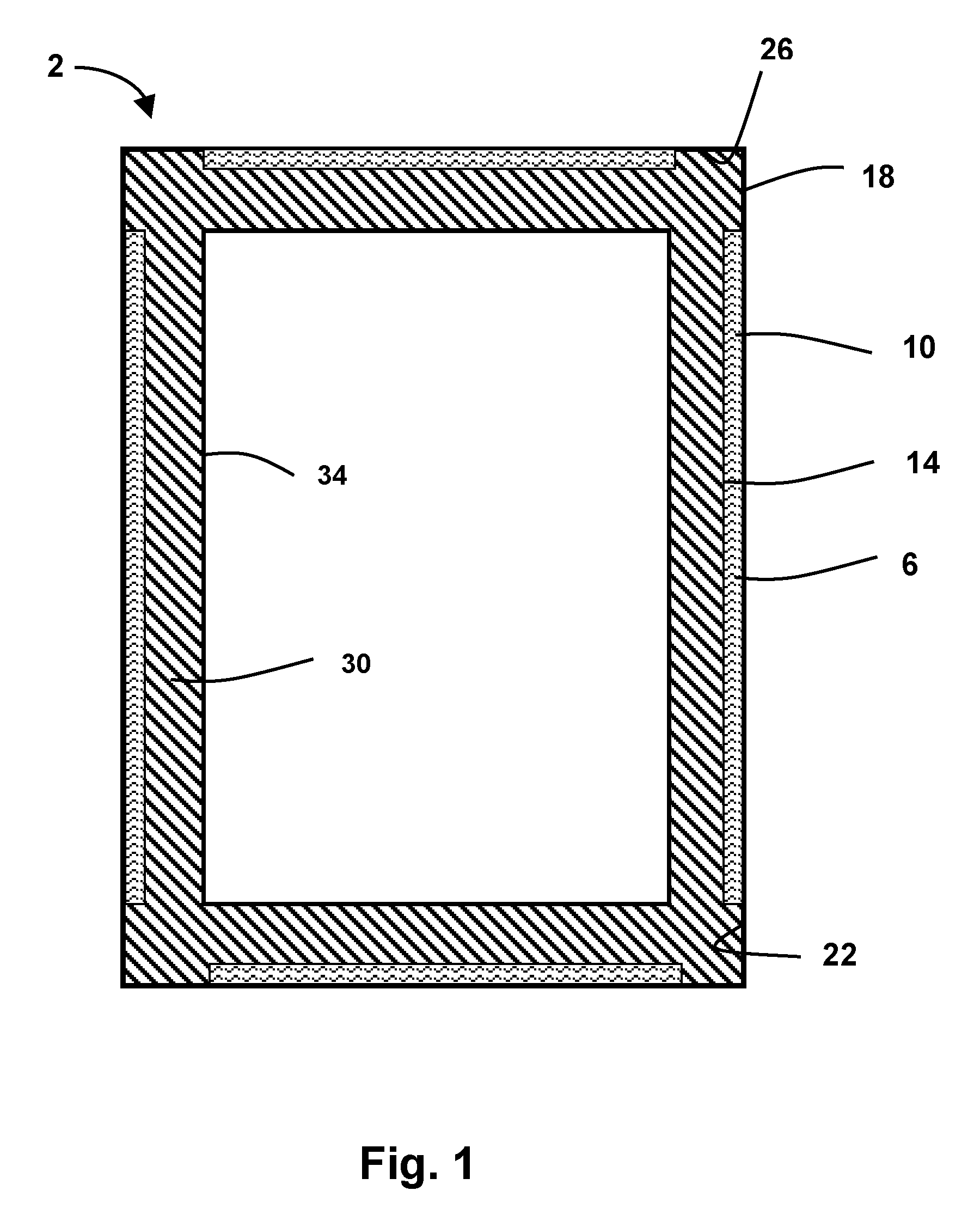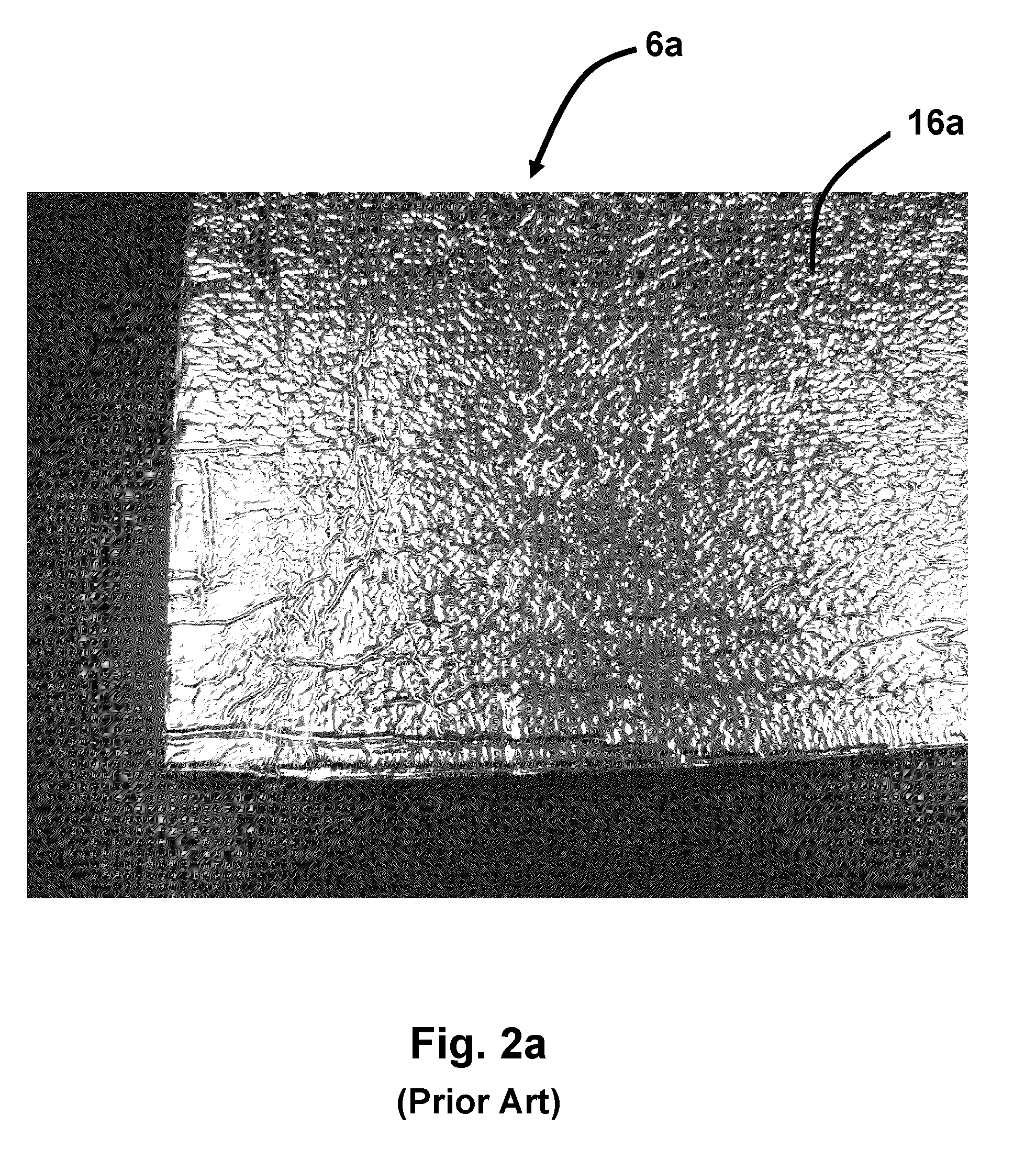Vacuum insulation panel with smooth surface method for making and applications of same
a technology of vacuum insulation panel and surface texture, which is applied in the field of vacuum insulation panel, can solve the problems of slight shrinkage, undesirable surface texture, and very rough outer surface of the sidewall of the vacuum insulation panel, and achieve the effect of reducing roughness
- Summary
- Abstract
- Description
- Claims
- Application Information
AI Technical Summary
Benefits of technology
Problems solved by technology
Method used
Image
Examples
Embodiment Construction
[0036]A vacuum insulation panel having a smooth sidewall, a method for producing such a vacuum insulation panel and appliances incorporating such panels, will now be described with reference to the attached figures.
[0037]FIG. 1 illustrates a cross-sectional schematic view of a conventional insulated refrigeration appliance 2 including at least one vacuum insulation panel 6 that comprises an insulative core material 10 and a barrier envelope 14 surrounding the core material 10. One example of such a refrigeration appliance is illustrated in U.S. Pat. No. 5,082,335 by Cur et al., which is incorporated herein by reference in its entirety.
[0038]The refrigeration appliance 2 includes an outer metal cabinet 18 (i.e., metal skin) defining an exterior of the appliance 2. During manufacture, one or more vacuum insulation panels 6 can be disposed against an interior surface such as side surface 22 and / or top surface 26 of the metal cabinet 18. For example, each vacuum insulation panel 6 can b...
PUM
| Property | Measurement | Unit |
|---|---|---|
| Thickness | aaaaa | aaaaa |
| Thickness | aaaaa | aaaaa |
| Thickness | aaaaa | aaaaa |
Abstract
Description
Claims
Application Information
 Login to View More
Login to View More - R&D
- Intellectual Property
- Life Sciences
- Materials
- Tech Scout
- Unparalleled Data Quality
- Higher Quality Content
- 60% Fewer Hallucinations
Browse by: Latest US Patents, China's latest patents, Technical Efficacy Thesaurus, Application Domain, Technology Topic, Popular Technical Reports.
© 2025 PatSnap. All rights reserved.Legal|Privacy policy|Modern Slavery Act Transparency Statement|Sitemap|About US| Contact US: help@patsnap.com



